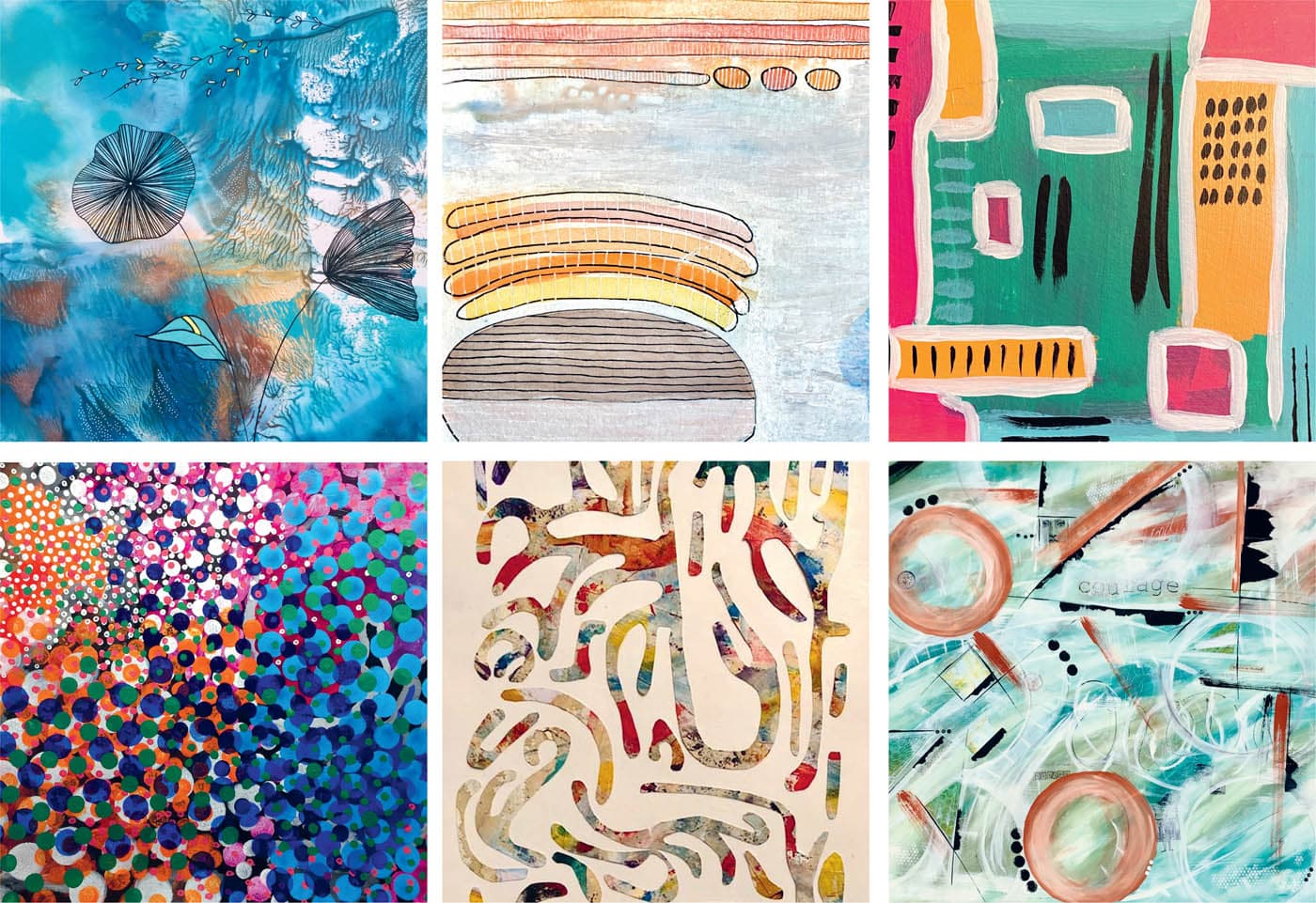7
INCORPORATING INSPIRATION FROM OTHER ARTISTS

WE BELIEVE THAT GENUINE CURIOSITY, honest self-inquiry, and the ability to metabolize personal life experiences create the foundation for developing a unique creative style. That belief informed our decision to begin this book with an emphasis on inner work, while saving this chapter for last.
That said, it’s very natural to be inspired by other artists and art forms—we certainly are! This kind of creative exchange is something we’ve seen throughout history, and with today’s widespread access to the Internet, it’s easier than ever to glean inspiration from artists all across the globe.
The way we see it, the problem is not being inspired by other artists but how we incorporate that inspiration into our own work. This distinction can be a slippery slope, but we’re excited to dive into this important conversation with you here.

In this chapter, we’ll explore how to be inspired by other artist’s work in an honorable way that doesn’t disrespect their hard-earned ideas and years of practice. We’ll also offer an array of prompts and exercises to put these explorations into practice as we clarify the difference between “being inspired by” and “being overly derivative.” This topic is very near and dear to our creative hearts, and in many ways, it motivated us to write this book. Many of us know how exciting it is to feel inspired by someone else’s artwork, and many of us also know how unsettling it can feel to have our work appropriated or copied without our permission. With these two experiences in mind, we hope this chapter offers some loving and clear guidance about how to navigate these sometimes murky waters. We’re excited to dive into this with you!INTERPRETING INSPIRATION HONORABLY
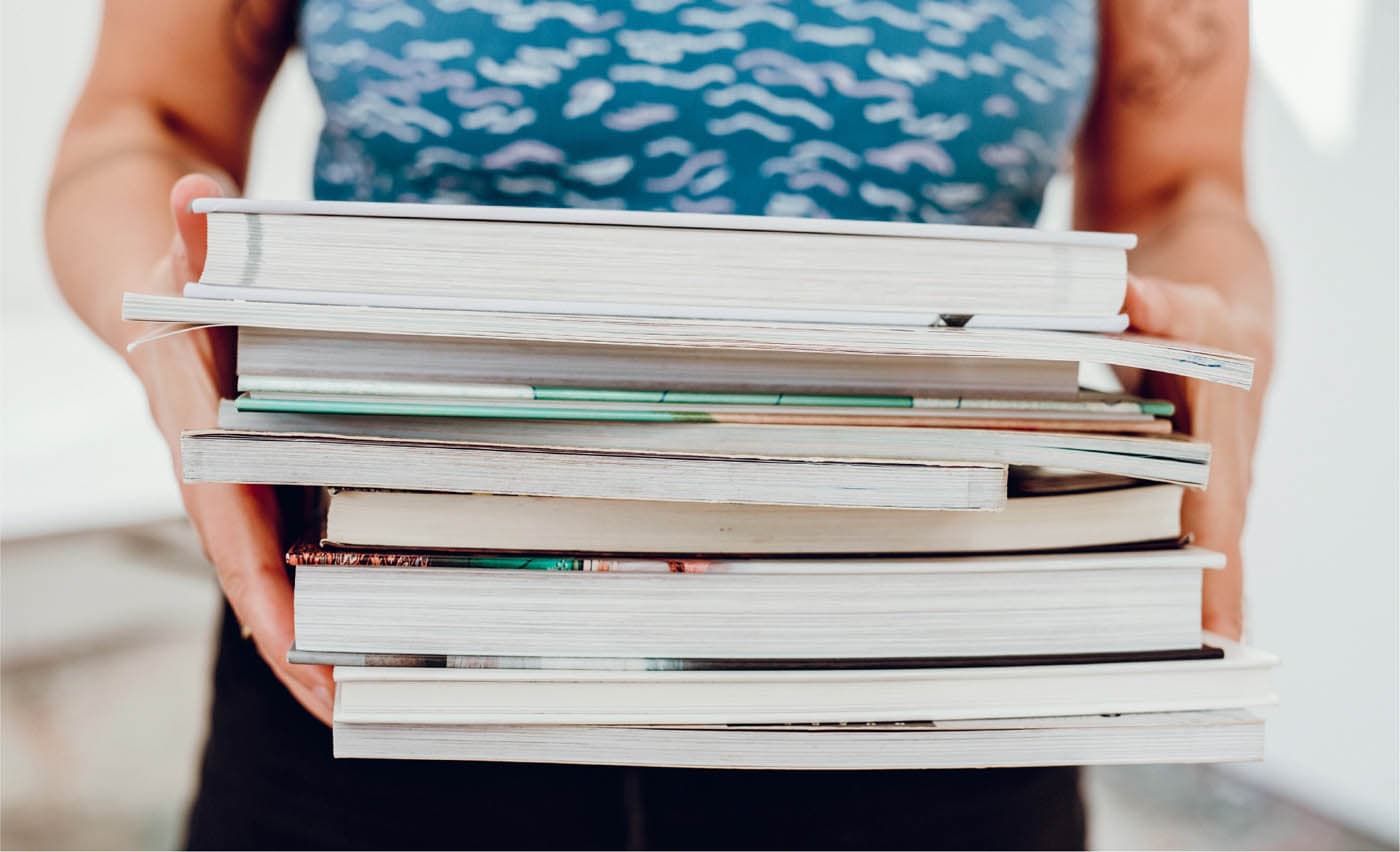
When you see a piece of art or a body of work you love, it’s natural and easy to think, “Oh I just LOVE that. I’m going to try it myself!” This approach of direct copying from outside sources can offer helpful insight when you’re new to a medium or a process and have no intention of sharing or selling your work. However, when you’re in the business of developing a style that is unique to you, it becomes ethically important to be mindful of just how much “borrowing” you’re doing from any one particular source. This is why getting specific about exactly what you feel inspired by is so important. To dig a little deeper into your personal preferences, ask yourself, “What am I feeling specifically drawn to or excited about in this piece of art or body of work?” This one simple question will instantly give you important information about how to incorporate what you like without borrowing too much from one place. Instead of taking it all, choose one specific thing you really love and add that to your ever-growing repertoire of inspiration. For example, you might think: “I love how the bright teal pops against the brown background to create a visual pop.”, “I’m drawn to the juxtaposition of large quiet areas of color with smaller fine details.”, “I’m intrigued by the way the figures are out of proportion.”, or “I’m inspired by the mixture of yarn, paper, thread, and paint.” Once you gain clarity about what you feel drawn to, take the time to work with it. Make sketches or take notes about what you’re seeing and what is standing out to you. Ask yourself what you notice first about the piece, what you love the most, and how you can imagine incorporating what you love into your own art. Let it sink in and simmer. Then, put the work away before you dive into your own creative process. All of these practices will help you metabolize the inspiration in a way that becomes more integrated and truer to you rather than looking at it directly while you’re creating. When you do sit down to create your own art, try mixing one specific thing you love about someone else’s art with your other sources of inspiration to see what kind of fresh alchemy might emerge. By doing so, you’re consciously curating and blending many resources without taking too much from any one person or place. Just like cooking, the more you expand and get to know your ingredients or sources of inspiration, the more comfortable you will feel improvising and cooking up something that is entirely your own.GETTING SPECIFIC

We’ve all experienced art that has affected us in one way or another. In this Writing Inquiry, we’ll explore the different ways we’ve related to art in our life thus far. My earliest memory of experiencing visual art was _____________ . At the time, I felt _____________ about it. These days, the art I love the most can be described as _____________ . One artist that has always been a favorite of mine is _____________ because _____________ . I also love _____________ and _____________ because _____________ . One of my favorite paintings is ____________ . When I look at it, the first thing I notice is _____________ . My favorite part is _____________ . The painting makes me feel _____________ . The painting makes me think _____________ . I could incorporate what I love into my own art by _____________ . If I could spend a day with an artist, it would definitely be _____________ , and I would ask them: _________________________________________________. In an art museum or gallery, I usually find myself drawn to _____________ because _____________ . An artist or art movement that I would love to learn more about is _____________ . Some other art forms besides painting that I love are ____________________________ . Most people don’t even think of _____________ as art, but I do. I would love my own art to look and feel more like _____________ .WRITING INQUIRY: What You Love and Why
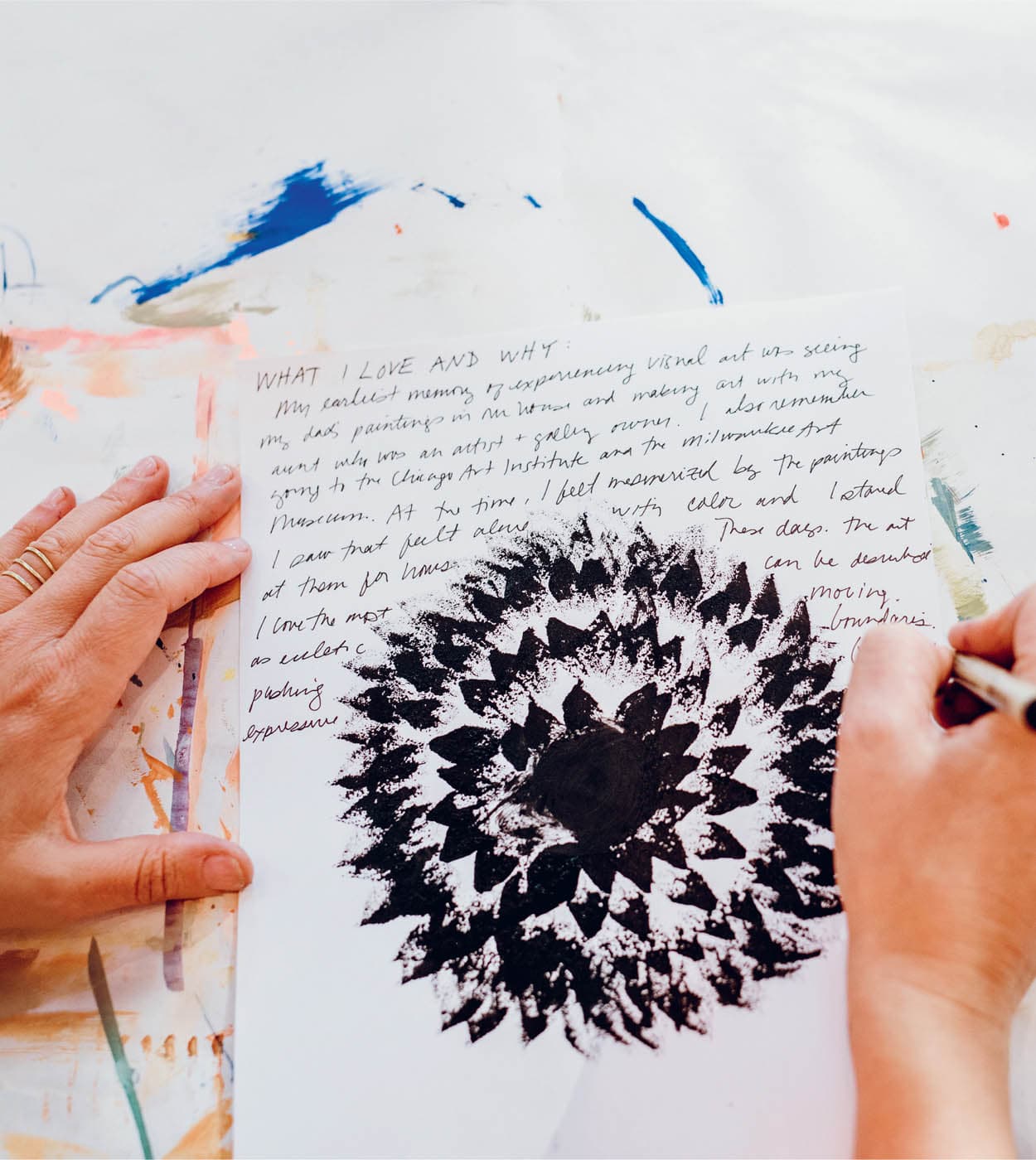

Spend some time with one of your favorite paintings mentioned in the Writing Inquiry. Notice specifically what you love about it and create a painting or group of paintings inspired by what you love. Remember, this is about choosing specific things about the artwork that really speak to you and allowing that specific information to mix with other sources of inspiration and serve as a guidepost in your own creations. This is not about replication or taking too much from one source. As you create using specific inspiration, continue to weave in your inner explorations, outer explorations, new materials, and the magic of the moment. When you’re done, consider drawing upon more than one artist for inspiration and combining those elements to create another set of paintings. What happens when you draw from three or four different artists? The possibilities are truly endless. Here are some more examples of what might feel inspiring about a painting:PAINTING CHALLENGE: Using Art as Inspiration without Copying
Painters are often inspired by other paintings. Working in the same medium makes that kind of inspiration translation very natural. However, when we consciously look to other forms of creative expression for inspiration, we not only broaden our pool of ideas, but we also avoid the temptation to appropriate another person’s particular painting style or specific work of art. We’ve come up with a series of prompts and different ways you might incorporate what you find into your art. These prompts are simply meant as starting points, and we wholeheartedly encourage you to follow your own inspiration incentives. What’s important is that you make a conscious effort to seek and find creative inspiration from many different sources. And, as always, have fun with it!SEEKING INSPIRATION IN OTHER ART FORMS
Music
Poetry
Dance
Sculpture
Photography
Textiles

Throughout this chapter, we’ve asked you what artists and art forms you feel most drawn to and why. We’ve also asked you to explore the different ways to be inspired by their work without being overly derivative. To finish this chapter, we thought it would be fun to share some of the artists, art styles, and art movements that have inspired us over the years and how we’ve integrated specific things from them into our own work. We have so much gratitude for all these important teachers and sources! Squeak Carnwath’s quirky and playful paintings inspired me to have more fun and to let go of the need to create “serious” paintings. They also showed me the power of incorporating the written word into visual art early on in my career. Cy Twombly’s pure, energetic, almost childlike marks gave me permission to stay loose and embrace my own authentic gestures. I often use my nondominant hand to achieve this. Street Art of all kinds excites me to consider the ways in which art intersects with public spaces to beautify, provoke, and inspire. I also love the raw, bold energy it often holds. Fauvism is an art movement that took place from 1905 to 1910. The strong colors, bold brushwork, and de-emphasis on things needing to look “real” helped to free me up in the beginning of my painting journey. Henri Matisse is one artist I particularly love from this movement. Melissa Koby is an artist I recently discovered, and I’m so glad I did. Her warm tones, powerful use of negative space, and eloquent commentary on social justice and equality in her illustrations are a soothing and stirring source of inspiration. Mark Rothko’s huge, luminous canvases actually seem to breathe, and they remind me of how stunning quiet space and delicate, transparent layers can be. Botanical Illustration has been a constant source of inspiration for me throughout the years. I love pouring over books and finding new shapes and patterns to explore in my own work. I have to include Music (of all kinds) in this list because it has played such a central role in my creative process for as long as I can remember. Dancing and painting and allowing my marks, lines, and colors to be influenced by beats and lyrics is something I hold dear. Hilma af Klint’s relationship with the spiritual world expressed through color and form helped me to embrace both big shapes and tiny details all in the same work. Her process of “channeling” imagery inspires me to listen deeply within to what wants to “come through me.” Wassily Kandinsky’s playful seriousness has allowed me to be silly and fun, while sharing what lies deeply within. His use of color and form, free from representation, granted me access to be expressive, varied, and at times whimsical, while also being honest, authentic, and balanced. Oliver Vernon’s energetic landscapes with sweeping lines and energy coupled with color washes and fine details inspire me to work with contrast both in color and in broad strokes and fine detail. Jeffrey Gibson’s works with painting mostly, but also doll making, beading, sculpture, installation, and more. I feel inspired by him to combine the mediums that speak to me in a creative, true-to-me kind of way. He also uses words in his work, and I am often inspired to put words into my work, motivated by how he accomplishes this so gracefully. Martha Graham’s approach to dance and movement as a way to express deep wordless truths has been a great source of inspiration over the years. Martha believed art didn’t have to be “pretty” to be valuable; she believed the expression of truth and authenticity were queen. Martha often reminded creatives that everyone has something unique to offer into the creative conversation, but in order to access that authenticity, we must practice, practice, practice. Inspired by Martha, I often remember that just showing up and moving color and shapes around with paint and art supplies is a way of practicing my innermost truth. As I continue to show up and practice, I find my authenticity and expression from moment-to-moment, over and over again. The World of Jewelry is transcultural and timeless. Human beings have found meaning in adorning bodies through millennia, and the shapes and materials that have been found and formed exist throughout the world. I find that the shapes and designs from continents near and far speak to me about beauty and meaning, and I, too, seek to create timeless shapes that hold significance. From the natural colors found in stones and metals to the bead practices, I find comfort in the repetitive designs that speak to me and soothe my being. The Bauhaus was an art movement started in Germany in the 1920s which emphasized design in art, craft, and architecture. The Bauhaus movement has had a huge effect on me and many other artists. It began as a school environment that sought to create serviceable objects of use and beauty, combining craft with fine arts while also adding social relevance to the arts. All mediums could be included with their minimalist and functional sensibilities, and I’m particularly inspired by how they created a creative community with many mediums involved. I often see my life’s journey through many mediums tied together with my ideals and core inspirations as an extension of the Bauhaus school. I can feel how its existence and influence in my design repertoire ties me to so many creatives worldwide who are also inspired by the Bauhaus.SOME OF OUR PERSONAL INSPIRATIONS
Flora’s Inspirations
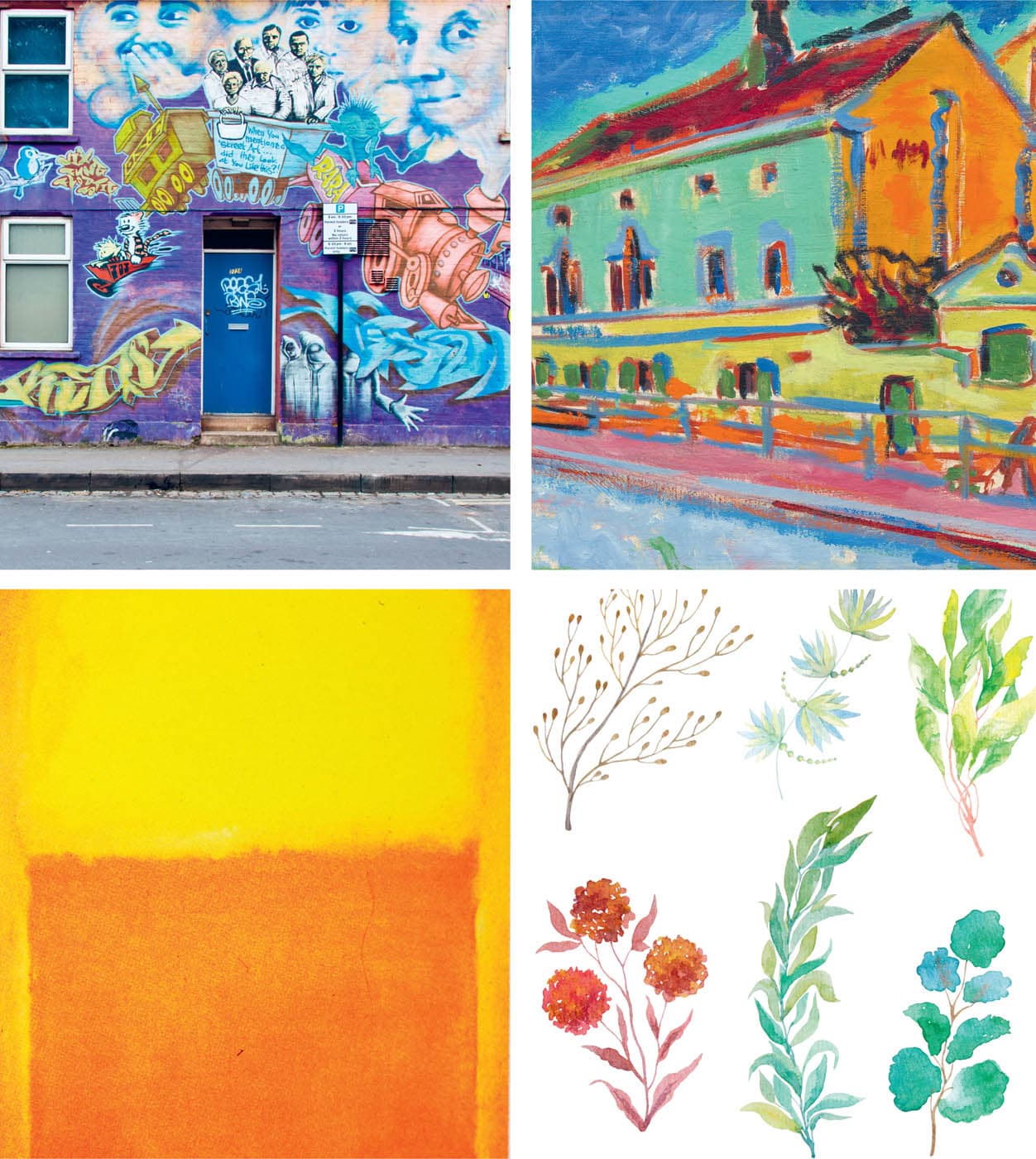
Lynx’s Inspirations


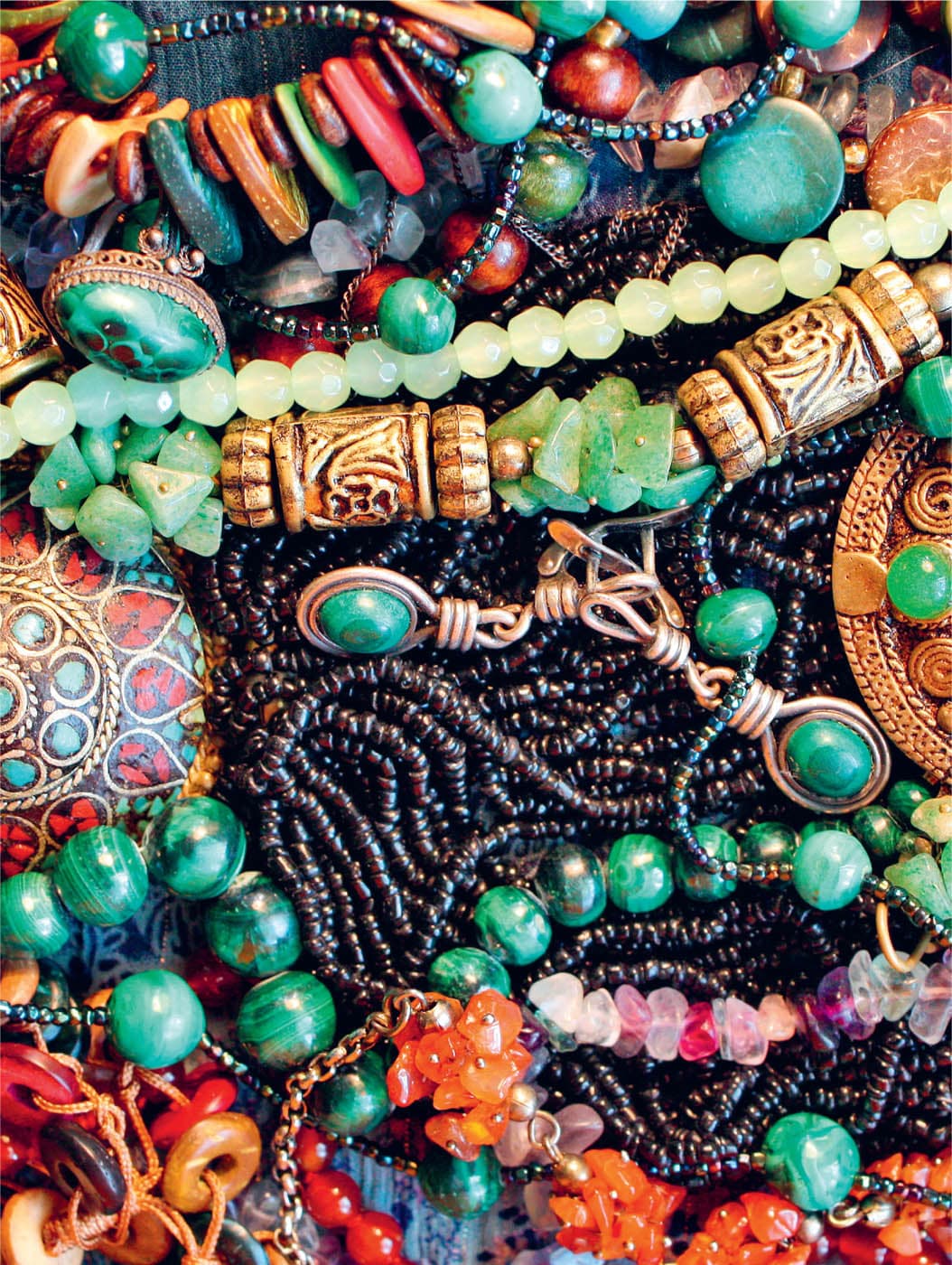
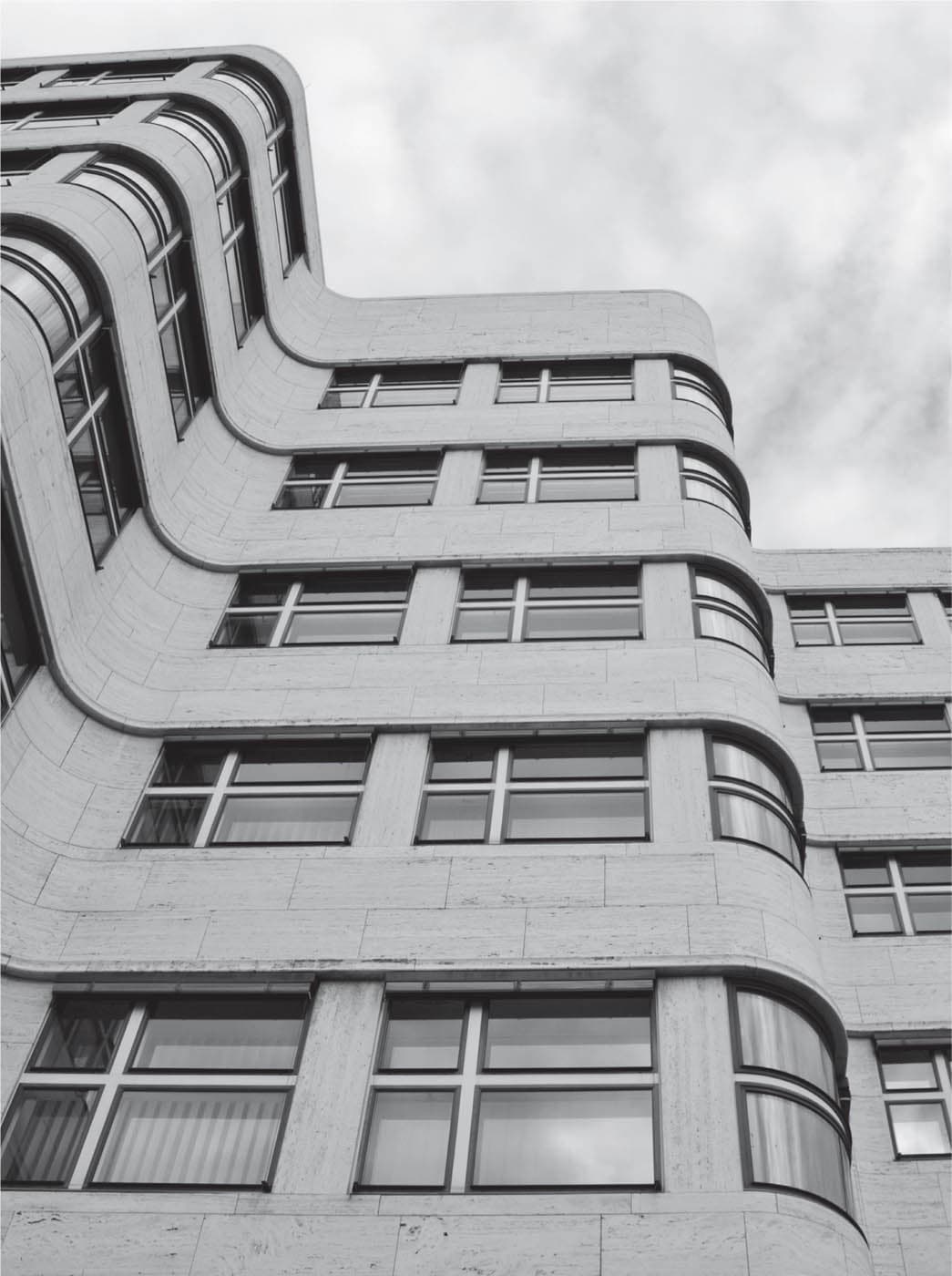

Now that your cup is overflowing with artistic inspiration, it’s time to integrate all those specific things you love and find ways to weave them into your own unique creations. If you haven’t already spent time looking at and considering what you love about a few pieces of art, this is a great time to do that. Remember, this is not about replication or taking too much from one source. It’s about choosing specific things about the artwork that really speak to you and allowing that specific information to serve as a guidepost in your creations. As you create using this inspiration, continue to weave in your inner explorations, outer explorations, new materials, and the magic of the moment. If you’re feeling unsure about how to begin, here are a few prompts to get you going:INTEGRATE AND CREATE
Jumping-Off Points
This is a sampling of paintings completed by Fresh Paint E-Course participants.
TOP ROW, FROM LEFT: BOTTOM ROW, FROM LEFT:STUDENT GALLERY
Incorporating Inspiration from Other Artists
